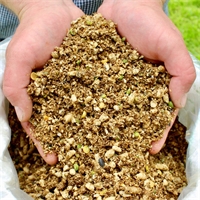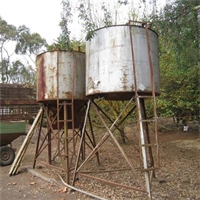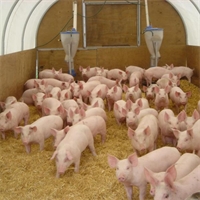29May
Spare a Thought for S
This promotional feature was supplied by Ballance Agri-Nutrients.
Sulphur (S) is vital in any farm setting, but often lacking in New Zealand soils, especially in spring when it’s most needed. Despite being essential, relatively cheap and straightforward to apply with other nutrients, S is still easily overlooked.
Sulphur is required for clover and pasture growth, and plays an important role in protein synthesis is part of many enzymes important for biochemical processes, constituent of some vitamins, and is vital for chlorophyll production. Clover in particular needs S; the Rhizobia bacteria in the root nodules require it for efficient nitrogen (N) fixation. If plant growth suffers due to S deficiency, pastures appear pale green or yellow, with clover affected first. Insufficient S can also limit pasture response to N, particularly if S levels are low after a wet winter.
Sulphur in fertiliser is either sulphate S (which is plant available and leaches readily) or elemental S (which is not plant available and does not leach). The forms of S in soil are organic S (stored in soil organic matter and making up about 90 to 95 per cent of soil S reserves) and inorganic S (present as sulphate S available for plant uptake from soil solution and sulphate S adsorbed to soil particles).
Spring’s S shortage
Sulphate S in soil is often in short supply in early spring. Over winter, bacteria are less active and slower at converting organic and elemental S into sulphate S, which also leaches over wet winter conditions. Soil type and rainfall impact the degree of S leaching over winter; coarse soils such as sands and pumice suffer greater leaching than finer ash or sedimentary soils.
Elemental S, on the other hand, does not leach. As soil temperatures warm up in spring, bacteria become more active and gradually convert elemental S into sulphate S.
Adequate levels of sulphate S are needed for spring pasture to thrive. When sulphate S is deficient, if N fertiliser is applied the response to N may not be optimised it such situations .
To choose the right S product, consider timing of plant requirements and application, the leaching risk (taking into account the soil type and rainfall) and if it will be applied with other nutrients.
Applying early spring S
On ryegrass dominant pastures in early spring, if an immediate S deficiency (where sulphate levels are in single figures) is likely to limit pasture response to N, then sulphate S may need to be added with N, as elemental and organic S release of S will be too slow. Consider products such as sulphate of ammonia (SOA), SustaiN Ammo (containing sulphate S) or PhaSedN Quick Start (containing sulphate and elemental S) to ensure early spring pasture has sufficient S and applied N is utilised efficiently. PhaSedN Quick Start is a good late winter to early spring option to address short and medium-to-long term S needs. It combines PhaSedN with SOA, and provides both elemental and sulphate S.
Annual maintenance S
As a general rule, sulphate S can be applied in spring and elemental S in autumn. The exception is high rainfall areas (>1500 mm) where a mix of sulphate and elemental S should be applied in spring.
If superphosphate-based fertiliser is applied annually to soils with low risk of leaching (<1500mm) in spring, there is normally no need for additional S applications. If it is not applied, or if an alternative phosphate fertiliser without S is used, a separate application of S is needed, either in elemental or sulphate form.
If applying S or maintenance fertiliser in autumn, use a product containing some elemental S, as it sits in the soil over winter ready to meet spring pasture’s S requirements, and provides a slow release of S over the growing season. Elemental S is also ideal for hill country where fertiliser is often applied every two to three years. For autumn application, products such as the Sulphurgain range (15S, 20S, 30S) are an effective way of applying elemental S along with maintenance phosphorus requirements. Where phosphate fertilisers are used that don’t contain S, products such as Sulphurgain Pure containing 90 per cent S as elemental S, or PhaSedN containing elemental S and N (as SustaiN) are good options.
Related

The Rakaia Gorge can be an unforgiving place to be a cropping farmer, with its howling nor’westerli...
Read More

Hekeao Hemp Co. came to life on a sunny day in September last year when two friends loaded hay into ...
Read More

After several accidents caused by the instability of tripod farm fuel tanks, the fuel distributor ne...
Read More

Farmers have been hit with all sorts of challenges of late, but a new report shows that hasn’t stop...
Read More

This year’s Ruralco Instore Days will be held on Thursday 7 July and Friday 8 July, with deals avai...
Read More

Pork farming is a relatively small industry in New Zealand – but with consumption growing dramatica...
Read More